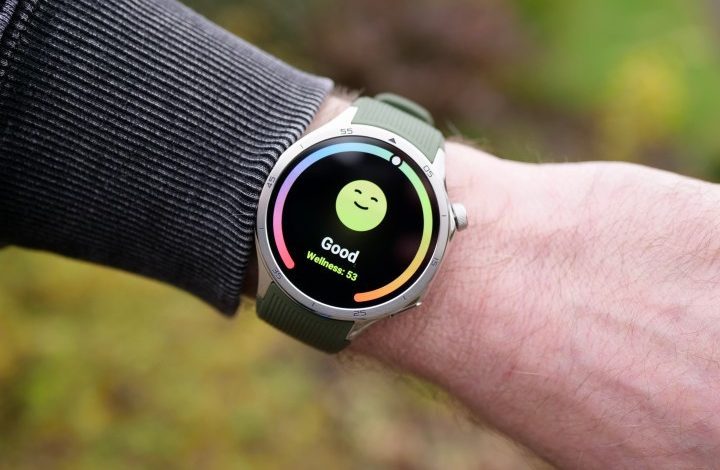A smaller OnePlus Watch 3 may be coming, but has a big challenge to overcome

The OnePlus Watch 3 is a great Wear OS smartwatch, with its claimed five-day battery that beats competitors like the Galaxy Watch 7 or Watch Ultra by a long margin. It isn’t perfect, though, and there are a few aspects where OnePlus could improve, and it’s working to address those in another model that should come this year.
A OnePlus representative recently confirmed a new OnePlus Watch — perhaps, a new variant of the Watch 3 — was being worked on. It may not launch immediately, but the brand is supposedly fixing two issues some people may currently have with the OnePlus Watch 3. With this iteration, we could see a smaller and lighter OnePlus Watch 3, while a new problem could emerge because of that. Let me discuss this below.
A smaller OnePlus Watch 3 is good
The design of the OnePlus Watch 3 is undeniably premium. When the Watch 2 launched last year, I credited it as one of the most good-looking Wear OS smartwatches. This has only improved with the Watch 3, which doubles down on the premium aesthetic with a rotating crown button, which is also functional, and the use of titanium for the bezel around the circular display.
At the same time, the stainless steel chassis leads to considerable heft, which could the Watch 3 uncomfortable for many folks. At almost 50 grams (0.035 ounces) without the straps, the OnePlus Watch 3 is admittedly one of the heaviest smartwatches. The large 47mm circular dial doesn’t help the ergonomics either.
To fix this, OnePlus is developing another smaller variant. Dr. Leo Zhang, the head of R&D at OnePlus’ Health Lab, confirmed this development in an interview to Pulse by Wearable (via 9to5Google). Zhang said the need for a smaller watch arises from customers’ feedback about the existing weight of the OnePlus Watch 3 — and even the Watch 2, especially for those with small wrists, claiming the issue affects “typically women.”
Zhang emphasized the issue will be resolved “this year,” suggesting a new OnePlus Watch could launch in 2025 itself. There still are chances that while the brand lays the groundwork for the watch this year, it might not launch until the next refresh cycle, which is early 2026.
Zhang did not comment on the exact size that OnePlus was considering for the smaller variant — and if this watch would simply be a shrunken version of the OnePlus Watch 3 or an entirely new one. Notably, OnePlus launched the Watch 2R last year, which was about 20 grams lighter but also arrived with cutbacks in the quality of materials. I certainly hope that’s not the case with this new device.
A smaller watch is a tested approach

This is a vetted approach that leaders in the smartwatch industry already follow. Apple offers the Watch Series 10 in two different dial sizes — 42mm and 44mm. Samsung, too, lets you choose between 44mm and 40mm variants. Despite these differences, the dissimilar sizes for both watches offer the same design and button layout, with the only visible differentiator being the screen size.
Expecting OnePlus to simply downsize the Watch 3 while preserving most elements of its design wouldn’t be a far stretch. The two-size approach should help OnePlus onboard more users. It could also help the brand cut back on manufacturing cost, which hopefully translate to a more appealing pricing.
An inevitable challenge

While the smaller design could mean better wearability, it would inevitably lead to a challenge. The shrunken size of the OnePlus Watch 3 would force OnePlus to slim down the battery, which makes for its biggest highlight.
The 650mAh battery on the OnePlus Watch 3 is one of the largest among smartwatches and allows the brand to claim an unprecedented five-day-long battery life. In contrast, the Apple Watch Ultra 2 or the Galaxy Watch Ultra, with the slightly smaller batteries (around 550mAh) last only up to two days on regular usage.
If OnePlus trims down the size of the Watch 3, a smaller battery would become obligatory. A smaller battery in turn would mean some compromises in battery life. It’s difficult to predict how much of a trim we see, and how it truly impacts OnePlus’ five-day battery claims, but a decline cannot be overruled.
Perhaps a more advanced battery tech could save OnePlus, though the possibility of that maturing in 2025 is low.
Better connectivity on the cards

In addition to the need for a smaller design, Zhang also acknowledged the lack of LTE support globally. He said it’s rather quite simple to integrate the technology for LTE, which would allow calling and messaging even when your phone isn’t around and be especially useful when you engage in outdoor activities. The real “hurdle,” according to Zhang, is the lack of support from carriers.
OnePlus is currently working with carriers, at least in Europe, to chalk out dedicated data plans for the watch. If that happens in time, we could see an LTE option with the smaller OnePlus Watch 3. Whether the same applies to the current variant remains a mystery.
The challenge ahead

OnePlus has addressed one of the biggest concerns we previously had with Wear OS smartwatch: insufficient battery. While the bar has been set high, getting the same backup with a smaller battery — even with a smaller display that consumes relatively less power — would be a mighty challenge for OnePlus.
I hope OnePlus does its due testing instead of pushing a product into the market simply as a stopgap solution, catering to those who want similar features as the excellent OnePlus Watch 3 but in a smaller footprint. I would be interesting to see how OnePlus takes on that challenge without sacrificing on its unique proposition. More importantly, it would be fascinating to see if the smaller model gains more traction despite its trade-offs.
Meanwhile, OnePlus is sweating it off to get the FDA’s approval for ECG on Watch 3. The hardware already exists on the Watch 3, but the feature is disabled citing the lack of regulatory approvals. OnePlus also awaits approval before it can add the ability to detect sleep apnea, though it’s unclear whether that will be available for the Watch 3 or not.



